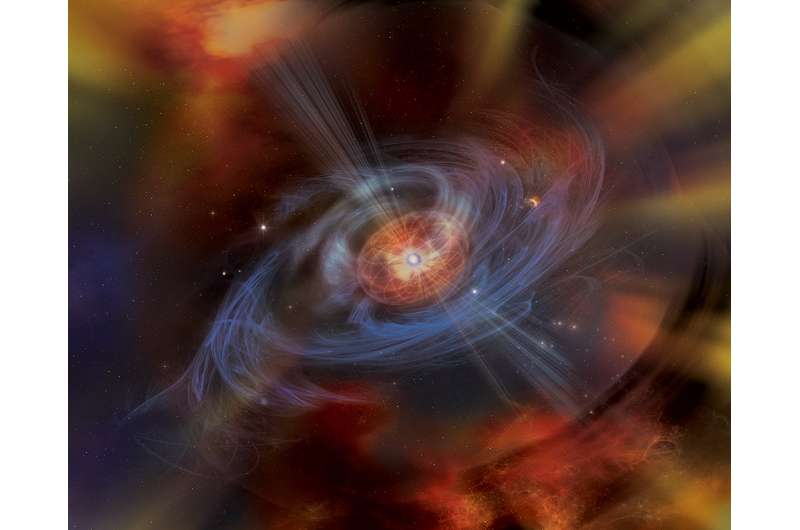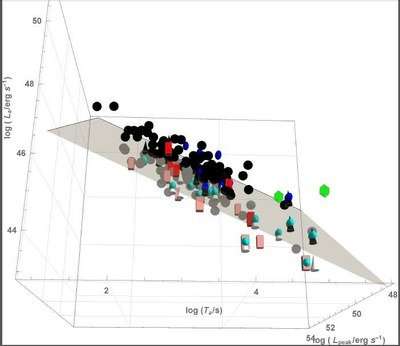A powerful tool for characterizing and classifying gamma-ray bursts

A powerful tool for characterizing and classifying gamma-ray bursts (GRBs) to allow their use as tracers of the expansion history of the universe has recently been presented by an international team of researchers. The work, which has been published in the Astrophysical Journal, is a statistical analysis of the properties of the mysterious GRBs, aimed at determining a sub-group of GRBs and investigating the physical origin of these systems.
GRBs are the most powerful high-energy events known, lasting anything between a few second to a few hours. During their short-lived phase of very high-energy gamma-ray emission (called the prompt), they emit the same amount of energy the sun releases over its entire lifetime. They have been detected at distances such that their light has been traveling towards us since the universe was only a thousandth of its current size. Despite decades of observations, there is still precious little definitively known regarding the physical mechanisms that produce them. There are many proposed origins, including the explosions of extremely massive stars, the mergers of neutron stars or the spin down of magnetized massive stars.
As GRBs can be detected at much earlier epochs than supernovae, determining their intrinsic luminosity could trace the expansion history of the universe out to significantly more remote cosmological times than currently possible. Lead author Dr. Maria Dainotti has shown that the details of the less energetic but much longer-lasting X-ray afterglow plateau phase can define a sub-class of long GRBs such that a very tight correlation appears between the duration of the X-ray plateau phase, its luminosity, and the luminosity of the prompt gamma ray feature (see Fig. 1). This three-parameter correlation pinpoints a plane in which the axes, length, width and height represent these quantities.

The researchers have subdivided the sample into categories: the plane identified by gold GRBs, and GRBs with very well-defined and less steep X-ray plateaus. This analysis shows an even smaller scatter compared to the planes derived from the other classes. This suggests its use for cosmological studies where it is essential to know the precise brightness of the cosmological tracers used.
There is evidence for a different physical origin for short GRBs presenting extended emission compared to the other classes. This is of relevance to the nascent field of gravitational wave astronomy, in which a distinct signal might be expected in connection to events having a short or long GRB association. Thus, the distance from fundamental planes featured by GRBs with certain characteristics becomes a crucial tool to discern among GRB categories, leading to a more profound understanding of their nature. There is a statistical difference between the gold sample plane and the plane identified by short with extended emission.
The researchers are taking steps towards the identification of the diverse mixture of species which comprise the gamma ray zoo, a very challenging program which will ultimately determine the physical mechanisms responsible for the many gamma ray varieties, and finally fulfill the promise of their use as cosmological probes.
More information: A Study of the Gamma-Ray Burst Fundamental Plane. arxiv.org/abs/1704.04908
Journal information: Astrophysical Journal
Provided by Instituto Nazionale di Astrofisica



















